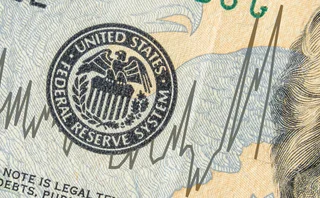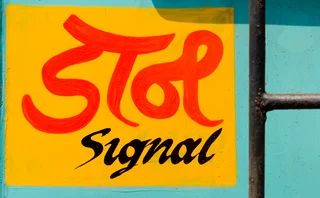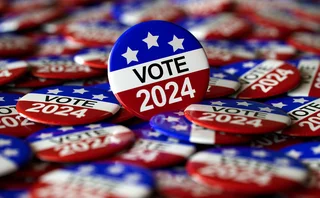
Conflict of interest: banks call for unity on Eonia
Eonia’s dive into negative territory has raised questions about whether collateral posters should also be paying interest – generally, traders think they should, while lawyers disagree. There is not much money at stake, but divided valuation practices would threaten the market’s integrity.

Three different banks, three different answers: yes, says one senior rates trader, his bank will be paying. No, says one markets head, the bank's lawyers are very clear on the matter – no payment is required. The third is firmly in I-will-if-you-will mode: "A lot of guys are saying they will not pay. We're not going to pay on one side if we don't receive on the other," says a rates trading head.
The question each was asked is whether they will pay interest on collateral they have posted against their over-the-counter derivatives trades, inverting the normal order of things, in which a collateral poster would expect to receive interest. Many traders see it as the logical conclusion now that Eonia, the rate paid on euro-denominated cash collateral, has dipped into negative territory – as do clearing houses, which generally pass through negative rates. But they are not all in agreement, and some lawyers strongly argue the opposite.
"The contract works perfectly well without an obligation to pay negative interest and it is not self-evident that negative interest should be payable," says Simon Firth, a partner in the capital markets team at law firm Linklaters in London.
The issue will come to a head on November 4, when interest for October – a month that looks set to have an average negative Eonia rate – is due to be paid. As things stand, some firms will pay up; others will not.
Dealers are bracing themselves for weeks of confusion and game-playing – the rates trading head suggests one US bank has deliberately constructed a big euro collateral-receiving position, and other firms are said to be selectively negotiating bilateral floors – but it's not going to make anyone rich. The limited disclosures banks make about their posted and received collateral amounts imply the sums at stake – even for a whole year of mildly negative rates – are in the single-digit millions.
At some point we have to demonstrate the ability to sort out our own problems
The bigger issue is whether some market participants decide to revalue portfolios to reflect their stance, and how the matter would be resolved if one side of a trade believes a floor exists, while the other does not.
"The numbers are truly not that material. But if you add in the chaos that could arise if you had different market practices, it could be material in terms of disruption to the market," says a managing director at one US bank.
A senior rates trader at a major dealer makes a plea for the industry to tackle the issue in a grown-up fashion: "At some point we have to demonstrate the ability to sort out our own problems. We have to prove to the world that we've learned, and that we're not just going to be an industry that picks and chooses different sides in every argument, and tries to nickel-and-dime everything. We need to show we have the ability to think about what's good for the system, what's good for the customers, what's good for the market and what is desirable. I think you would struggle to find many people who would argue that treating collateral different bilaterally – when compared to clearing – is helpful today," he says.
The problems start with the credit support annex (CSA) – the industry's standard collateral agreement. For a trade governed by a regular CSA in a positive rate environment, a collateral poster receives interest on the cash variation margin it posts to its counterparty. The amount is calculated daily, multiplying the reference interest rate by the amount of variation margin held, and dividing it by 360. The reference rate is determined by the currency – for instance, Eonia is used for euro cash posting, while the Federal Funds rate is used for US dollar margin. The reference rate can also be modified – for example, it can include a spread under or above the reference rate.
The interest owed is accrued during the month and paid by the collateral receiver to the collateral poster on the second working day of the following month – a process explicitly enshrined in the CSA, which makes no reference to cases in which a collateral poster would have to pay interest to the receiver.
This, some lawyers say, means a collateral poster has no legal right to ask for the payment, creating an implicit interest rate floor of 0% in a regular CSA. Traders disagree, pointing to central counterparties (CCPs) as an example of large-scale collateralisation that recognises negative rates (see box, "Torturing the language" – lawyers clash over CSA interest rate floor).
The industry had been quietly considering this issue since 2011, and the International Swaps and Derivatives Association released a negative interest rate protocol in May – three months before Eonia went negative – which would amend adhering parties' CSAs to confirm a negative rate would apply.
Big dealers have been slow to sign up, however, with only four adhering to the protocol as of October 29 – Bank of America Merrill Lynch, Goldman Sachs, JP Morgan and Morgan Stanley. This means thousands of counterparties are working with CSAs that are legally ambiguous.
"When it comes down to trying to use the language as it was discussed prior to anyone envisioning negative rates, it will of course lead to the opportunity for disputes to occur on both sides," says Simon Wilson, global co-head of counterparty exposure management at Royal Bank of Scotland in London.
The first rumblings of this could be heard in October. While Eonia spent roughly half of September in negative territory, the average for the month was still 0.007% – as a result, most posters of euro collateral would still have received an interest payment. But some CSAs express the reference interest rate as a spread below Eonia and these counterparties became the first to face demands for interest payments on October 2 – the US bank's managing director says his institution had hundreds of counterparties in this situation, including fellow dealers, which the bank expected to pay up.
This can be a drawn-out process. Market participants say it is not unusual for interest payments to be agreed and transferred up to a month after the due date. As of October 9, around half of the dealers that one European insurer expected to pay had done so.
A senior rates source at a European bank, which has not signed the Isda protocol, also says only around half of the top 15 dealer banks sent interest payments in October for CSAs where a spread made the rate negative. He says the hold-outs, which have also not signed the Isda protocol, sent letters to his bank saying they will not pay negative rates because they do not believe they have to legally.
Banks have been rather more polite with their clients. Ido de Geus, head of treasury and client portfolio management at Dutch asset manager PGGM in Zeist, near Utrecht, says the firm contacted all of its dealer counterparties in September, as its swaps were in-the-money. The "vast majority" of the banks said they will honour negative rates, he says.
PGGM is one of the handful of non-banks that has signed the Isda protocol. De Geus says he did so to clarify the firm's stance – negative rates should be recognised he says, and dealers should pay accordingly.
The coming weeks could see these conversations spilling into the mainstream – from the minority of CSAs where interest is expressed as a spread to Eonia, to all regular CSAs. In the month to October 29 the average Eonia rate was -0.011%, suggesting negative interest payments will be required across the industry from the start of November.

Dealers have been trying to head off disputes by contacting big clients to clarify their thinking on the issue.
Where clients are out-of-the-money, the senior rates source at a European bank says some are using collateral switch options in their CSA to move out of euro cash to other currencies that don't reference negative rates, or to non-cash securities that do not require the payment of interest on variation margin.
Others have looked to specify a floor exists bilaterally, in some cases by inserting language specifying this is the case. However, they have to be prepared to pay for it, as it creates a funding gap when a dealer hedges a floored uncleared swap with a cleared swap where negative rates apply. One dealer estimated this extra charge to be around 12 basis points running.
Where clients are in the money, the response is more straightforward. "The guys that have big balances are really biased in what they want, clearly. So the guys who want to receive interest are vocal – they want to receive it, because they are being paid a lot of cash and they want the interest on it," says the senior rates source at a European bank.
Dealers note that the actual value of interest payable is still small. If a dealer was out of the money to the tune of €50 million on a €500 million notional swap, and the average rate was -0.014%, the collateral poster would owe roughly €600. But this can add up if a fund has multiple swaps that are large and directional, and would roll in every month if Eonia remains negative.
Of more concern to dealers is the danger that market participants that believe a 0% floor exists may now seek to revalue their trades. How big an impact this has depends on the portfolio and the shape of the forward rates curve, but the US bank's managing director says it can be "literally pennies to perhaps a small number of millions of dollars on a very large portfolio".
Again, it's less about the money and more about the knock-on effects. Differing present values can cause a range of pricing issues – for instance, making it harder to agree the price of a novation, or to backload a portfolio of trades to a clearing house. The same problems suffocated the market for months after dealers changed the way they discount trades, dropping Libor in favour of a rate determined by the posted collateral.
"We want to avoid people running off and saying there's an implied floor here, so we're going to present-value everything differently. First, because it's a pain to calculate that, but second, from a market function point of view, the last thing you want is another switch optionality kind of thing that affects pricing and causes people not to agree a novation valuation, for instance," says the US bank's managing director.
A senior derivatives trader at a UK bank says it would be shortsighted of a counterparty to argue the existence of a floor solely to benefit from a perceived change in valuation or the extra interest payments. "That would damage the derivatives market more significantly than any kind of benefit as a whole. The overall damage to the market probably greatly outweighs any kind of net economic benefit to one party or another," he says.
"I'm not sure people should be sitting there and making windfall profits for an event that's happened that was really unexpected and unintended when the contract between the parties was originally written," he adds.
BOX: Ulterior motives?
While most market participants are keen to clarify that negative rates apply to variation margin interest payments for uncleared trades, the loudest parties have been the large dealers. This has led to some questions – even within the dealer community – about the motivations behind the move. Dealers tend to receive more collateral than they post, so in theory they would be a net beneficiary in a negative rate environment if the market moved to post negative rates.
A senior rates source at a European bank suggests one US bank has deliberately built up a large euro cash-collateral receiver position to take advantage of any market move. Other dealers say this is certainly possible: "I'm sure there's a bit of truth in that. They are probably invested in clarifying the stance in that direction," says another senior rates trader.
Others dismiss the idea. The chief risk officer of one large hedge fund says it would only make sense if a bank had managed to build up an enormous collateral balance. "But I used to be sceptical about Libor manipulation, and look where we are," he says.
A rough calculation using publicly available information from UBS's second quarter statement – the only one of the major dealers to break out its holdings of euro cash collateral against derivatives exposures – shows it has received €15.4 billion in euro cash collateral for derivatives trading, and has posted roughly €10.2 billion. If Eonia was set at -0.045% for a whole year, this would generate a €2.34 million gain for the bank if all contracts it held assumed negative rates applied – hardly a bonus driver.
BOX: "Torturing the language" – lawyers clash over CSA interest rate floor
A standard credit support annex (CSA) does not include any language dealing with a negative rate scenario, leading to arguments about whether negative rates are required to be paid by the collateral poster or not.
The problem is that paragraph 5(c)(ii) of the CSA says "the transferee will transfer to the transferor ... the relevant interest amount". Lawyers who believe there is an implicit 0% interest rate floor argue the CSA does not contemplate an interest payment from the collateral poster to the collateral receiver, as would be required in a negative rate environment, so the poster is not obliged to make a payment.
A managing director at one US dealer argues this is "pretty obviously an
omission" in the contract. "Have you ever seen an economically valuable option like a floor documented by omitting one direction of settlement in a settlement mechanic for interest? It's just inconceivable that people would have documented that and meant it to be a floor," he says.
Simon Firth, a partner in the capital markets team at law firm Linklaters in
London, says while this is an arguable point – because contract terms can be implied if they are deemed to be self-evident, or if the contract would not work without them – it does not apply in this circumstance. The contract works "perfectly well" without the obligation to pass through negative interest rates, and the drafters' intention is not clear, he argues.
Another trader points to the wording around the credit support balance (CSB), which is the amount of margin that has already been transferred under the CSA. The definition of the CSB in the CSA says it includes "any equivalent ... interest amount not transferred". This, say some lawyers, means the interest owed by the collateral poster would simply be subtracted from the CSB, instead of being a separate payment.
"It says any interest amount not transferred pursuant to the transfer provisions will form part of the credit support balance. So if you have an interest amount you've calculated as -€100, it seems to me that that forms part of the CSB, and so the credit support you have already provided, say €1 million, is now -€100. So you didn't have to pay the amount over, but the value of the credit support sitting there is reduced by that negative interest amount," says Patrick Clancy, partner and head of the UK derivatives group at law firm Shearman & Sterling in London.
Linklaters' Firth, however, says this doesn't prove that an interest amount can be negative and automatically be subtracted from the CSB.
"The definition states that the interest amount "will form part of the CSB" – that supports the view that an interest amount cannot be negative because "form part of" means "include as part of". You cannot construe the words "form part of" as meaning "be deducted from" without torturing the language," says Firth.
Another common argument put forward by traders in favour of negative interest rates applying is that there's nothing in the CSA stopping it.
Unsurprisingly, perhaps, Linklaters' Firth is not sold: "Where an agreement is silent on a particular point, the normal conclusion is that nothing is to happen. There are circumstances in which terms will be implied into an agreement, but it is certainly not sufficient to show that the agreement is silent on the point," he says.
Shearman & Sterling's Clancy has a further argument. He points to Isda's 2006 definitions, where section 6.4(a) says "unless the parties specify otherwise, ‘negative interest rate method' will be deemed to apply to a swap transaction".
"Given there are provisions in the 2006 definitions to address negative interest rates, I think it's perfectly within contemplation that the market believes you could come up with a negative number," says Clancy.
Linklaters' Firth sees it differently – if the 2006 definitions explicitly address negative interest rates but the CSA does not, it would be more reasonable to conclude that the collateral agreement is deliberately silent on the issue: "The fact that the 2006 definitions mention negative interest rates but the CSA does not supports the view that a different conclusion was intended in relation to the CSA," he says.
Only users who have a paid subscription or are part of a corporate subscription are able to print or copy content.
To access these options, along with all other subscription benefits, please contact info@risk.net or view our subscription options here: http://subscriptions.risk.net/subscribe
You are currently unable to print this content. Please contact info@risk.net to find out more.
You are currently unable to copy this content. Please contact info@risk.net to find out more.
Copyright Infopro Digital Limited. All rights reserved.
As outlined in our terms and conditions, https://www.infopro-digital.com/terms-and-conditions/subscriptions/ (point 2.4), printing is limited to a single copy.
If you would like to purchase additional rights please email info@risk.net
Copyright Infopro Digital Limited. All rights reserved.
You may share this content using our article tools. As outlined in our terms and conditions, https://www.infopro-digital.com/terms-and-conditions/subscriptions/ (clause 2.4), an Authorised User may only make one copy of the materials for their own personal use. You must also comply with the restrictions in clause 2.5.
If you would like to purchase additional rights please email info@risk.net
More on Markets
EU bonds favoured over swaps as hedge for European debt
Hedge funds are increasingly using the bonds to hedge Bunds and OATs as swap correlations decline
Canada benchmark shaken by T+1 hedge fund influx
Shortened settlement cycle swept hedge fund trades into Corra, making the rate more volatile
Basis swaps surge amid US repo concerns
Fed funds-versus-SOFR swap volumes nearly quadruple as declining Fed reserves impact funding rates
India delays initial margin go-live date
RBI communicated putting off initial margin rules one day before planned November 8 implementation
Clearing bottlenecks blamed for muted volumes at FMX
Regulatory hurdles and market conditions have also hampered CME rival since its September launch
JPM sees upside in blurring lines between QIS and SMAs
Hedge funds are combining their strategies with bank indexes to create new products
Hedge funds take profit on vol trades with Trump win
FX volatility drops sharply as positions unwind; rates market sees mixed reaction
Shanghai Clearing House urged to take bond collateral for FX trades
Dealers complain that feeble interest rate paid on cash margin raises cost of clearing








